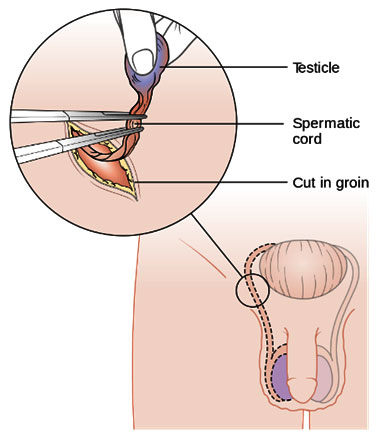Male to Female Surgery
Dr. Priyanka Sharma

Treatment Duration
4 Hours
------ To ------5 Hours
Treatment Cost
₹ 2,00,000
------ To ------₹ 6,00,000

Table of Contents
- What is Male to Female Surgery?
- What are the Benefits of Male to Female Surgery?
- Who needs Male to Female Surgery?
- How is Male to Female Surgery Performed?
- What to Expect Before Male to Female Surgery?
- What Can You Expect on the Day of the Male to Female Surgery?
- What Can You Expect During the Male to Female Surgery?
- What is Recovery and Post Op Care After Male to Female Surgery?
- What are Risks and Complications after Male to Female Surgery?
You can check Male to Female Surgery Cost here.
What is Male to Female Surgery?
Gender affirmation or sex reassignment surgery, whether male-to-female or female-to-male, refers to the surgical procedures that help you transition to your self-identified gender. The transition from male to female involves multiple feminisation procedures such as breast augmentation, voice surgery, facial feminisation, and genital surgeries.
Expert Doctors (10)
NABH Accredited Hospitals (10)


What are the Benefits of Male to Female Surgery?
According to research, transgender individuals who choose a male to female surgery experience long-term mental health benefits. The need for mental health treatment declines after male to female procedures. The procedure results in positive outcomes in areas such as:-
- Cosmetic appearance
- Sexual functioning
- Body image
- Self-esteem
- Family life
- Socioeconomic adjustment
- Social relationships
- Psychological status
- Satisfaction
Who needs Male to Female Surgery?
Males who want to match their physical body with their gender identity may opt for a male to female surgery. The surgery is ideal for people who experience gender dysphoria. Gender dysphoria is distress that a person may experience due to a mismatch between their biological sex and gender identity.
How is Male to Female Surgery Performed?
The male to female surgery varies depending on the procedures you choose. For a male to female surgery, you can choose a facial surgery, top surgery, bottom surgery, or a combination of these procedures. These procedures are categorised into genital and non-genital procedures, which are as follows:-
Genital Procedures
- Orchiectomy (removal of the testicles): An orchiectomy is the surgical removal of testicles performed before removing the penis. The surgery allows you to cut back on the intake of female hormones. Since testes are the primary producers of testosterone, removing them can help you reduce the amount of oestrogen to be taken. During the procedure, the surgeon leaves some skin behind to be used in labiaplasty or vaginoplasty.
- Penectomy (removal of the penis): Penectomy is the surgical procedure to remove the penis. During a penectomy, the surgeon creates a shallow vaginal dimple and a new urethral opening to allow urination in a sitting position.
- Feminising Genitoplasty (creation of female genitals): The procedures for creating female genitals include vaginoplasty, labiaplasty, and clitoroplasty. Vaginoplasty involves the creation of the vagina, labiaplasty involves the creation of the labia, and clitoroplasty involves the creation of the clitoris. Usually, vaginoplasty is performed with penectomy with a technique known as penile inversion. In this technique, the surgeon turns the skin of the penis inside out to line the walls of the new vagina.
Non-Genital Procedures
- Facial Feminisation: It refers to a series of surgical procedures that reconstruct the male facial features to be more feminine. You may choose to have one, two, or all these reconstruction surgeries. The procedures for facial feminisation may include:-
- Mandible contouring (reshapes the jaw for a more rounded, feminine feature)
- Chin contouring (softens your chin’s angles)
- Cheek implants (improves cheek volume)
- Scalp advancement and forehead contouring (brings your hairline forward and lifts your eyebrows)
- Lip lift and plumping (reduces the space between the nose and the top of the lip)
- Chest Feminisation (Breast Augmentation): The surgery can be performed using two methods:-
- Implants: The surgeon places silicone or saline implants to increase breast volume and provide a more feminine chest. He/she typically makes the incisions at the base of your breast or near the armpit.
- Fat grafting: The procedure involves the placement of abdomen fat to add volume to your breast. It usually requires a few rounds to achieve the desired volume.
- Neck and Voice Feminisation: The surgery involves feminising the appearance of the throat and altering the pitch of your voice. The procedures for neck and voice feminisation include:-
- Laryngeal shave or tracheal shave: The procedure involves reducing the size of the thyroid cartilage in the neck to flatten the Adam’s Apple for a more feminine look.
- Type 4 thyroplasty: The procedure lengthens the vocal cords and raises the vocal pitch.
- Buttock Feminisation: The procedure involves using fat harvested from the abdomen or flanks to provide a feminine shape to your buttock.
Alternatives for Male to Female Surgery
Non-surgical options to treat gender dysphoria include:-
- Hormone therapy: Increases feminine characteristics
- Voice therapy: Adjusts the voice or tone of a person
- Puberty blockers: Prevents a person from going through puberty
Of these, hormone therapy is a common treatment procedure that can result in the following changes:-
- Development of breast tissue
- Thinner and drier skin
- Fat distribution around thighs and hip
- Reduction in body and facial hair
- Decreased erections
- Shrinkage in the testicle size
- Experiencing different feelings and emotions

What to Expect Before Male to Female Surgery?
Consultation With Mental Health Professional:-
- Before surgery, you will meet a psychologist or mental health professional who specialises in gender issues.
- The therapist will confirm whether you have gender dysphoria.
- He/she will also check if you have a social network that will support you or if you have enough internal strength to manage on your own.
- If all goes well, he/she will refer you to an endocrinologist or hormone specialist.
Consultation With Healthcare Provider:-
- The healthcare professional will review your medical history and discuss which procedures you would like to undergo.
- He/she will help you understand the procedure, risks, and limitations of male to female surgery.
- He/she will perform certain lab tests to measure your blood sugar, blood count, lipids, electrolytes, liver enzymes, and the hormone prolactin.
- Based on the reconstruction procedures you choose, he/she will explain the hospital stay, estimated cost, and insurance formalities.
- Two to four weeks before the surgery, your provider may ask you to undergo a pre-anaesthetic checkup and medical evaluation to check whether you are healthy enough for the surgery.
Restrictions:-
- Inform the healthcare provider about the prescription and over-the-counter medications you are taking currently.
- You may need to stop taking certain medications like blood thinners to reduce the risk of blood clots.
- Your provider will ask you to stop eating or drinking anything after midnight the night before the procedure.
- Furthermore, he/she will ask you to quit smoking and drinking alcohol before the procedure.
What Can You Expect on the Day of the Male to Female Surgery?
- The team will ask you to sign the consent formalities, giving your permission for the procedure.
- The hospital staff will inform you about the change of clothes.
- Someone from the nursing staff will shave the excess hair at the surgical site.
- The anaesthesiologist will monitor your vitals, including breathing, blood pressure, and heart rate.
What Can You Expect During the Male to Female Surgery?
- Depending on the procedure, you will be made to relax on the operating table in a certain position.
- The anaesthesiologist will administer an IV line for fluids and medications in your arms or hands.
- He/she will administer either general or local anaesthesia depending on your PAC results and the procedure being performed.
- Based on your discussion with the surgeon before surgery, he/she may perform a facial surgery, bottom surgery, top surgery, or a combination of these procedures.
- For facial surgery, your surgeon will alter the appearance of your cheekbones, chin, jaw, neck, nose, hairline, and/or lip.
- For top surgery, he/she will perform breast augmentation using implants or fat grafts.
- For bottom surgery, he/she will perform genital procedures like orchiectomy, penectomy, and feminising genitoplasty.
What is Recovery and Post Op Care After Male to Female Surgery?
- In the hospital:-
- After the procedure, the team will shift you to a recovery room for observation.
- For facial or top surgery, you may get discharged either on the same day or require a day or two hospital stay. However, if you undergo a bottom surgery, the hospital stay may be about six to eight days.
- Before discharge, the doctor will provide home care and follow-up instructions.
- At home:-
- Recovery:-
- You might experience swelling and soreness for several days at the surgical site. The recovery from male to female surgery may vary depending on the procedure performed.
- Chin and jaw surgery: Swelling fades within two weeks after the procedure, taking up to four months to completely disappear.
- Cheek and nose surgery: Swelling lasts two to four weeks after the procedure.
- Top surgery: Swelling and soreness may last up to one or two weeks. You may need to avoid engaging in strenuous activity for at least a month.
- Bottom surgery: You may not be able to resume routine activities for at least six weeks after the procedure.
- You might experience swelling and soreness for several days at the surgical site. The recovery from male to female surgery may vary depending on the procedure performed.
- Psychological support:- You will continue to work with a therapist or counsellor to support you with social transitioning and mental health.
- Therapy:-
- Hormone therapy will be necessary at all stages of male to female surgery, before and after the sex change.
- The therapy is important as it helps change the physical appearance to resemble a woman, reducing the male characteristics.
- After vaginoplasty:-
- A catheter will be left in your urethra to collect urine.
- Avoid sexual activities with your new vagina unless your doctor allows it.
- The doctor will give you a set of vaginal dilators of increasing sizes to be inserted in the vagina to lengthen and stretch its size.
- Recovery:-
First Follow-Up Appointment
- Your doctor will typically schedule the first follow-up appointment 7-10 days after the surgery. During the visit, he/she may:-
- Examine your recovery
- Remove sutures for any procedure that requires sutures
- Provide further follow-up appointments
What are Risks and Complications after Male to Female Surgery?
Like any other surgery, the possible side effects of male to female surgery include:-
- Bleeding
- Side effects of anaesthesia
- Infection
- Rupture of stitches
Other complications of the procedure may include:-
- Seroma (fluid accumulation beneath the skin)
- Hematoma (collection of blood outside of blood vessels)
- Tissue necrosis (death of body tissue) in the vagina and labia
- A tear, opening, or fistula between the rectum and new vagina, leading to signs such as gas or faeces leaking from the vagina
- Narrowing or closure of the new vagina and/or new urethra
- Prolapse of the new vagina, either partial or total
- Blood clot in a deep vein or a lung
- An abnormal connection between two body parts
- Urinary incontinence
- Pelvic floor dysfunction
- Loss of sexual pleasure
- Permanent scarring
- Changes in skin sensation
- Dissatisfaction with the shape of the vagina or any of the other procedures
Signs such as tissue necrosis, abnormal connection, and severe scarring may require revision surgery.
Call your doctor immediately if you experience:-
- Bleeding for more than a few weeks after surgery
- Signs of infections (a wound that doesn’t heal or changes colour)
- Vaginal discharge
- Pain that persists after several weeks
- Signs of a blood clot (shortness of breath, dizziness, warm swollen legs, or chest pain)
Last Updated on: 6 February 2024
Reviewer

Dr Priyanka Sharma is a well-known Plastic, Reconstructive and Aesthetic Surgeon associated with HealthPort Clinic in Delhi. She has 14 years of experience in Plastic, Reconstructive and Aesthetic surgery and worked as an expert Plastic,...View More
Author

Sparshi Srivastava
B.Tech Biotechnology (Bansal Institute of Engineering and Technology, Lucknow)
2 Years Experience
An ardent reader, graduated in B.Tech Biotechnology. She was previously associated with medical sciences secondary research and writing. With a keen interest and curiosity-driven approach, she has been able to cont...View More
Other Treatments in Your City






















